

© words, photographs, Linden Wilkie, 2023
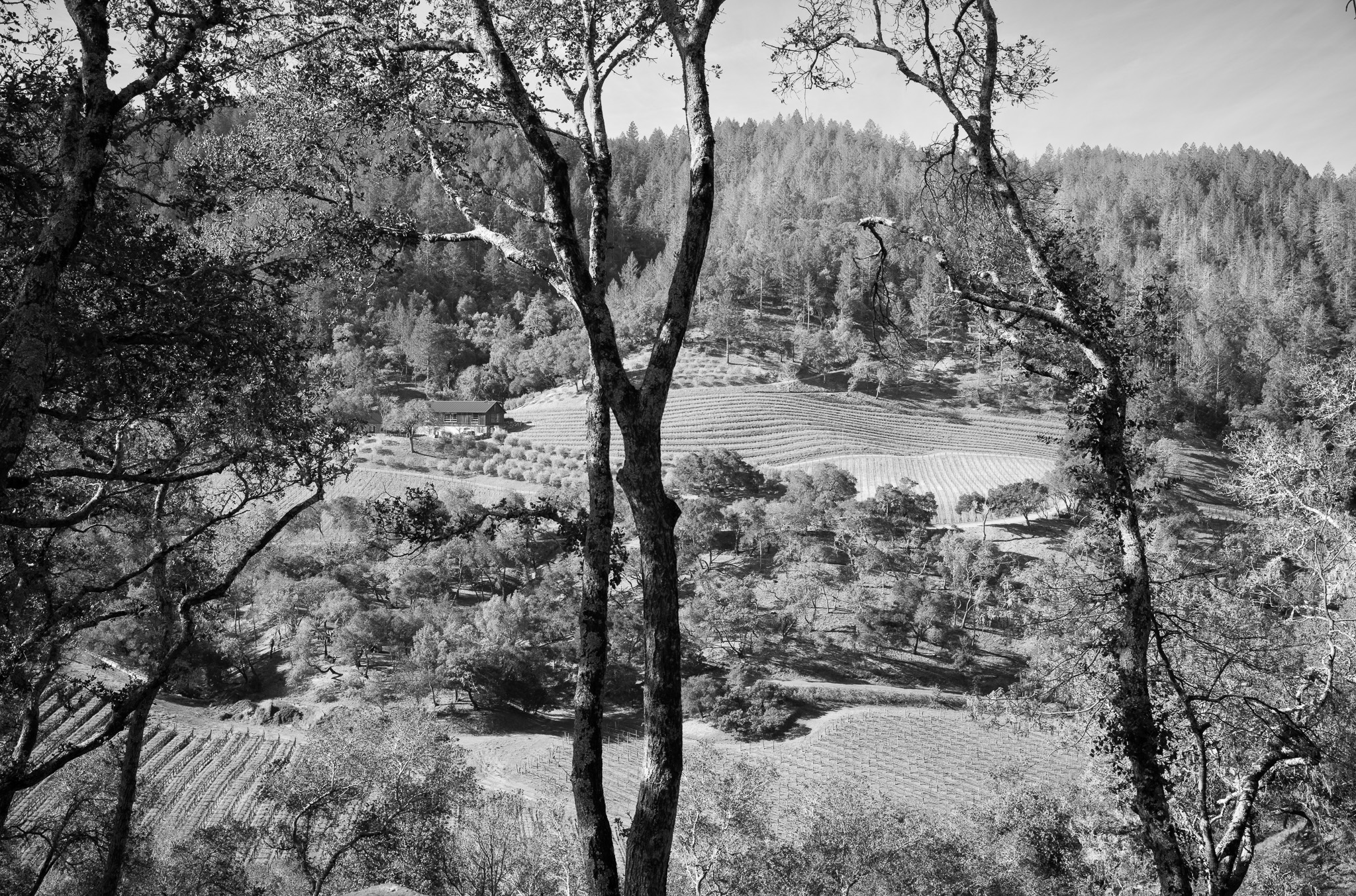
A Visit to Harlan
From St Helena we head south on 128, the narrow highway that bisects the town. My friend Mike has the printout in his hand as we drive. We are heading only an athletic stone’s throw away, yet our car’s navigation system won’t bring us to Harlan I’m warned in advance by email. Instead I should follow the detailed instructions provided, that include discerning a change in gradient, and then turning off the road. We pass a herd of sheep-for-hire, and then a discreet gate suddenly appears. An immaculate stone-flanked drive takes us up a tree-covered ridgeline ending in an abrupt right turn and the Harlan building, low key in creeper-covered stone and weathered timber. Welcomed for a glass of Champagne on the porch I notice a solitary pebble lying in the threshold. An omission, or sprezzatura1, I wonder? It feels timeless, calming, very “off-grid” here. Bob Levy, who has worked with Bill Harlan for some 40 years, is the man proffering Krug, and we begin immediately into conversation – how did this relationship begin?
The Seed and the Circuitous Route
The seed of Bill Harlan as wine man came in 1966 when the then 53 year old Bob Mondavi launched the Robert Mondavi Winery, and the 26 year old Bill attended. That seed germinated into the idea of perhaps ‘some day’ owning some land out here in beautiful rural Napa, but the life the young UC Berkeley graduate took to get there took a circuitous route of Walter Mitty2 proportions. He went motorcycle racing in the UK, spent a year hitchhiking the length of Africa, learned to fly a plane, was an open ocean swimmer, sailed the world. That was followed by work as a stockbroker, real estate developer and professional poker player back in California in the 1970s, ‘settling down’ on a barge in Sausalito upon which he built a mansion in homage to the Taj Mahal, which he had much admired while studying architecture in India.
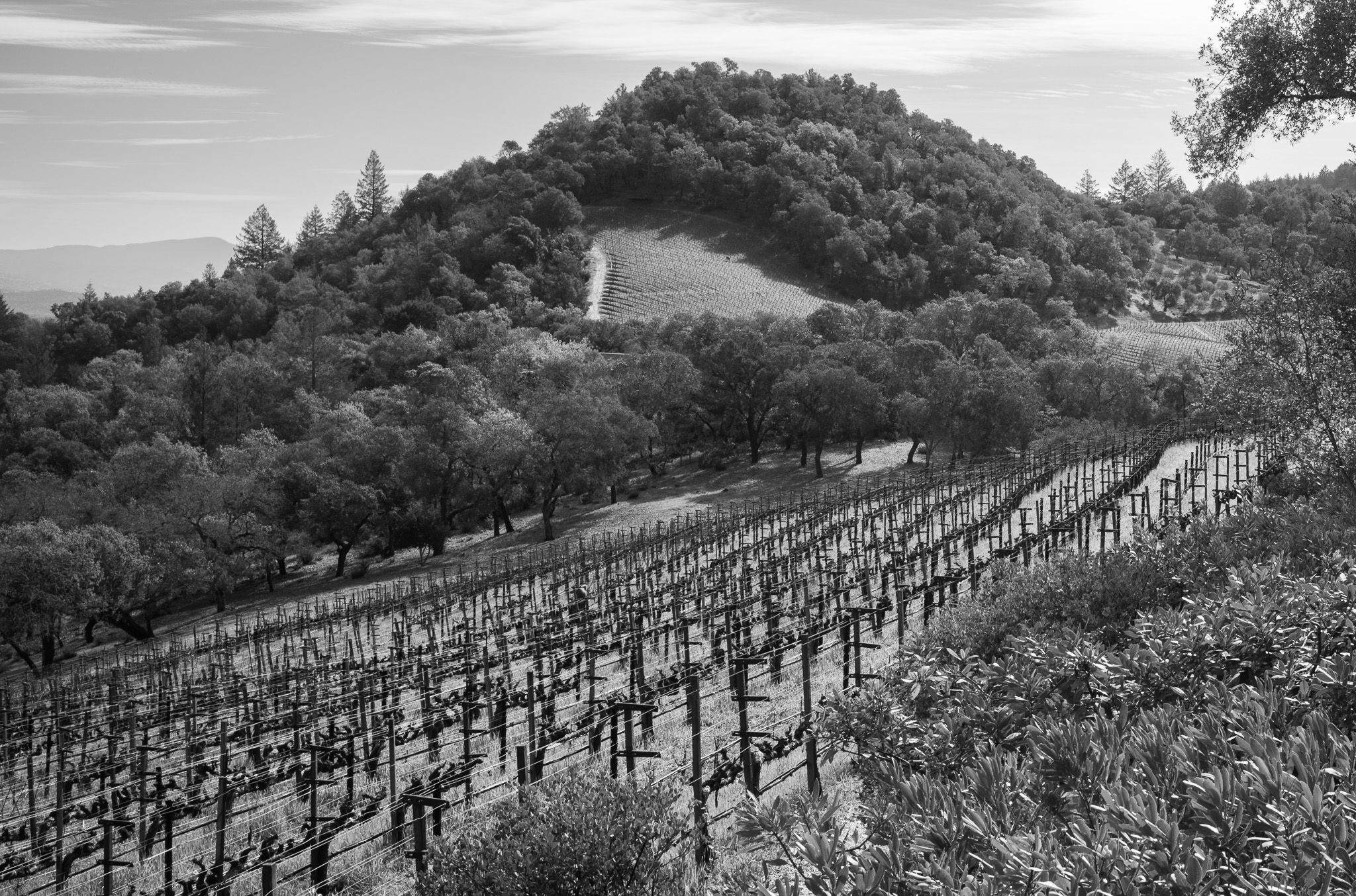
Bob Mondavi and The French Connection
In 1979 Bill had the chance to buy and develop Meadowood, building it over the decades that followed into one of the country’s most luxurious country club retreats, replete with 3 Michelin-starred restaurant. That led to Harlan and Mondavi’s lives intersecting once more. As Bob Levy recalled, “in 1980 Mondavi wanted the Napa Valley Vintners Association to elevate Napa’s profile through marketing efforts, and to raise money for local health care through charity auctions. He needed a suitable space, but also a neutral one, so there was no favoritism seen amongst the wine estate members. Over lunch Bob pitched to Bill that that space should be Meadowood.” “Bill, not being familiar with the wine world, was persuaded to join Mondavi on a 3-week tour of France, beginning with Burgundy and a look at the idea’s inspiration – the annual Hospice de Beaune charity wine auction, and then on to see the first growths of Bordeaux. Bill got to see the best terroirs, and to meet people who had been making wine for generations on the same land. For Bill it was a real eye opener, a tremendous vision, that an entity could last for generations, an expression of permanence, with attention to detail in everything. He bought the format, but he was still not yet in the wine business…” (Bob Mondavi was a friend of and partner with Baron Philippe de Rothschild. In November 1980 they had just vinified their second vintage of Opus One. I could well imagine a visit to Château Mouton-Rothschild was a key moment.)
Bob Levy, Founding Winemaker of Harlan Estate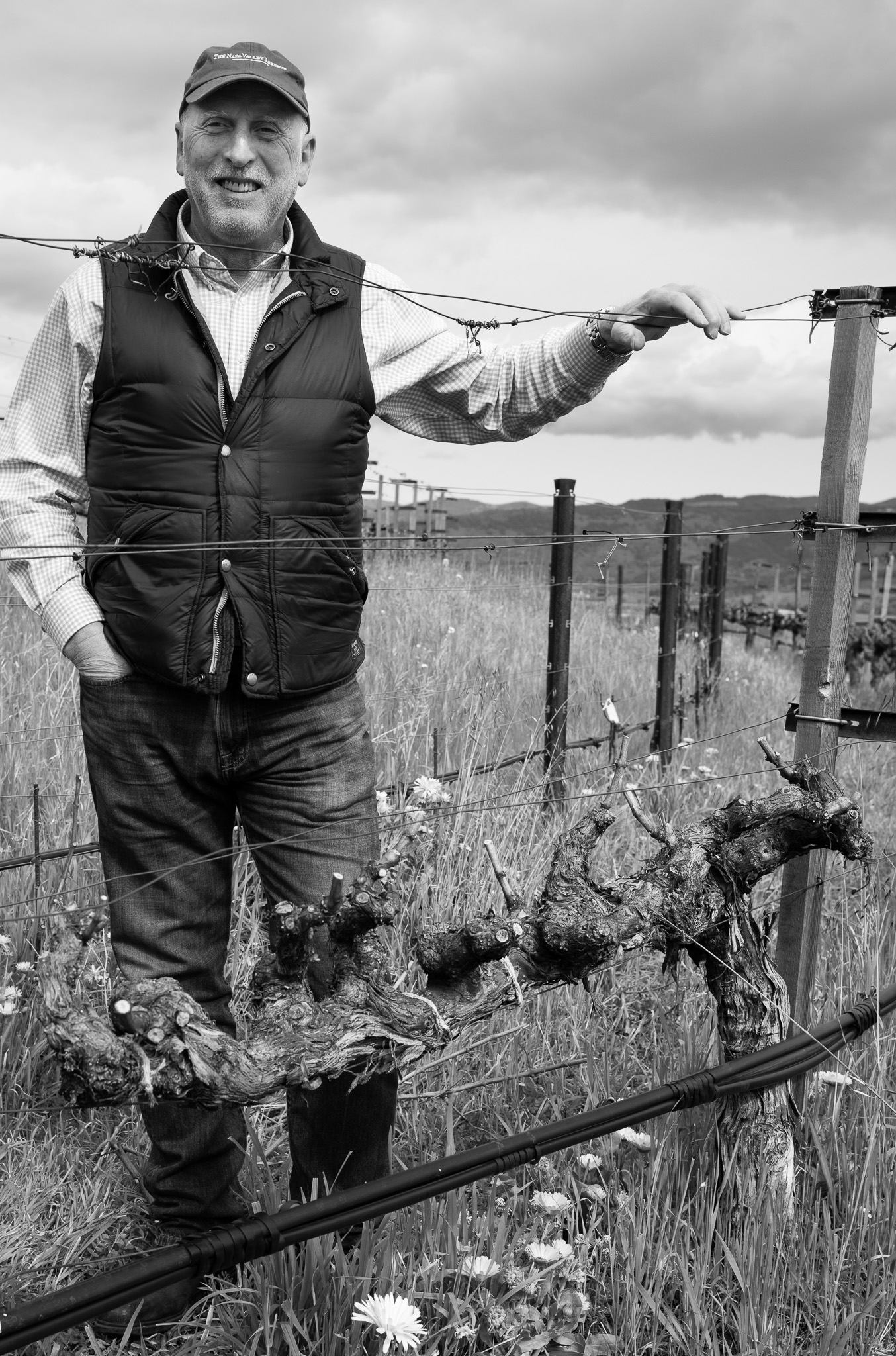
Bob Levy would have followed his family into a medical career if chance had not intervened. “My parents and sister went to UCLA, but I hated the metropolitan area, I wanted to be somewhere more rural, so I went to US Davis, still on the medical track. In my second year I was going to declare ophthalmology and immunology as my majors, but was worried that this, again, would lead to a life in the city.” Being in wine country, and the University of California’s wine campus, Bob had the chance to build a passion for wine tasting that had begun in his late teens. The penny dropped that he could combine this passion with a rural life, and become a winemaker, and so switched tracks.
He worked first for Cuvaison in the mid-1970s, before joining Koerner Rombauer from 1981, creating a “custom crush” business for a number of wine estates, including – from 1983 – Bill Harlan’s first wine venture, Merryvale. Bob gave Bill the chance to taste the differences in fruit sourced from all over the valley.
The Gambler’s Better Odds
“Bill understood what I too had learned – that the best land was often mid-slope. Bill wanted to create a Napa Valley “first growth”, and as a gambler, he was looking to skew the odds in his favour. He knew the best side of the valley was this one – on the bench west of Oakville – but he thought that if maybe we went a bit higher, we’d have an even better chance.”
They found a 40 acre forest, with no roads, electricity or water connection, but it fit the bill. “The challenge then was to choose the right sites to clear and plant. We wanted the maximum gradient we could plant on without a hearing, and that was 30°. We knew that in the growing season, the Pacific Ocean fog line has a cooling effect that slows ripening giving more freshness to the wines, and the best layer for this was between 325ft and 550ft.
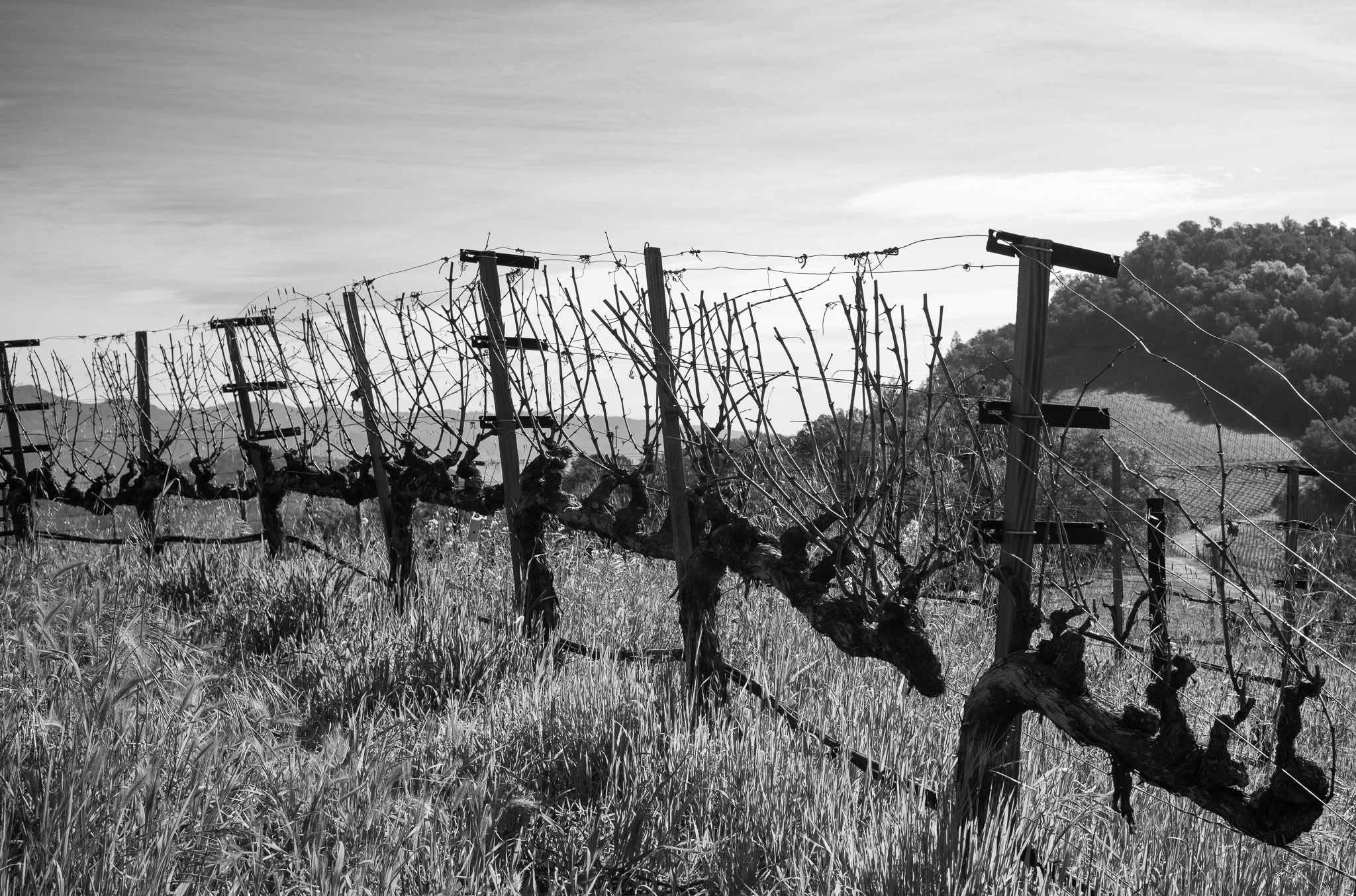
Tannin Maturity
The first plantings in 1985 were made on terraces draining to a creek they were mandated to create for erosion prevention. In addition to this geologically diverse site, at the right slope and elevation, right from the initial plantings, Bob’s key idea – tannin maturity – was incorporated from the outset. “I learned that I liked the power and concentration that came from hillside sites, as well as the great sense of character, but I didn’t like the tannins of many of those wines, I found them aggressive, dry, dusty. People said that you just needed to wait 20 years, but it’s not true. When you look at the best of Bordeaux you see better tannin maturity, and the reason is the long growing season. The problem in Napa is that because it is warmer than Bordeaux, we accumulate sugars easily, but the tannins are not fully mature. “My goal, after we found the right cool site, was to slow down ripening, to develop better, softer tannins, and more complexity. Right from the start we did that with vine competition. At the time, on the valley floor, people were planting 8ft x 12ft – 454 vines an acre. We planted at 900-990 vines per acre – double. In 1985 people thought we were crazy.” As Harlan has evolved, vine densities have increased further, to as much as 4000 vines per acre, including planting new rows planted between the old ones. “The idea is that as the density increases – up to a point – the vine will produce less fruit, naturally, and that moves the tannin development curve earlier into the season. We have done over 200 things on tannin maturity, some big impact, some small.” Drier farming and the use of cover crops, and a focus on soil health are amongst them.
Winemaking by Quality and Tannin Maturity Matching
We head into the winery and the tannin theme comes up once more. The vineyards are planted to 82% Cabernet Sauvignon, 10-12% Cabernet Franc, 2% Petit Verdot and 3% Merlot – “around that”. While that planting mix today represents a decrease in Merlot and an increase in Cabernet Franc, nonetheless Bob thinks “Merlot gets a bad rap today in Napa because its planted in high vigor sites – its needs low vigor sites.” But while we know what’s planted here, we can’t know the blend of a given year. “The reason is that we pick by passes – multiple passes. We are looking for better tannins, and we look to pick for uniformity of fruit quality and tannin maturity – regardless of the grape variety – and we co-ferment these uniform lots. This has made a demonstrable improvement in the wine.”
The rest of the process doesn’t seem so unusual in a high quality operation. Healthy clusters are hand-harvested in small crates, de-stemmed (the stems and skins are later used in compost at this organic estate), mechanically sorted to remove shot berries, and then sorted by 20 people at a long vibrating table, with problem grapes removed by hand. The healthy berries are fed by paddles on a conveyer into the troconic oak vats, native yeast fermentation follows, then ageing in French oak – (Taransaud and Sylvain) – that was once 100% new, but these days closer to 60~70% new.
The Long Game
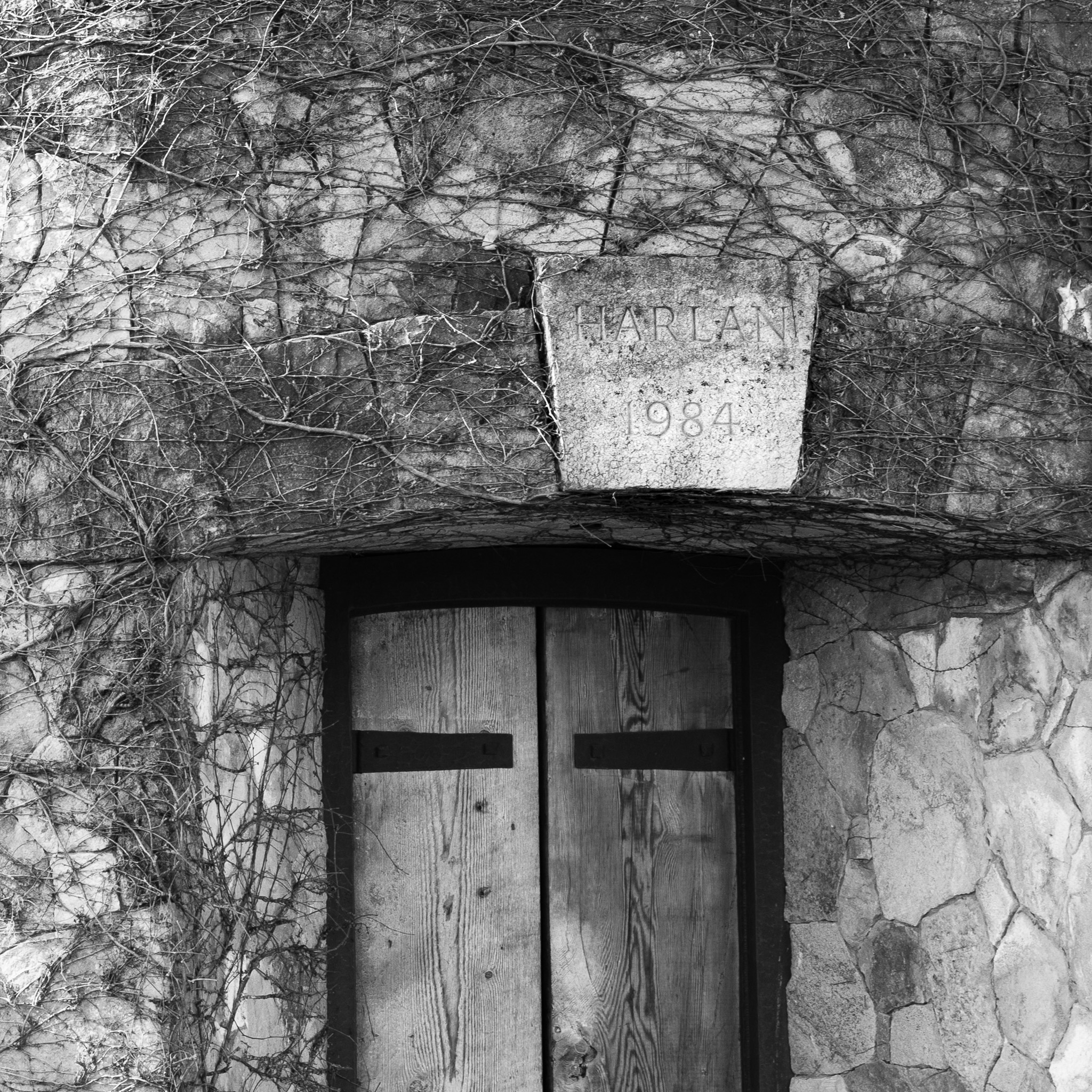 The key differences are – as they always are, after terroir – down to people, and the guiding principles of the estate. Bill Harlan infamously created a “200-year plan” for his estate, because he saw in France that it took more than one generation to achieve a “first growth”. In a wine region where careers often follow similar ‘ladders’ to the corporate world, it’s telling that Bob Levy – Founding Winemaker, Director of Winegrowing, and Don Weaver, Founding Director – are still here 40 years later. I ask Bob, does this extend beyond the founders? What does a 200-year plan mean in practice? “The core culture here is to do better than before, while maintaining the integrity of the land, and the integrity of what we are doing. We can’t mandate for the next generation. But when I hired my replacement [Harlan winemaker] Cory [Empting] I knew he had the same passion. I hired him 20 years ago and told him ‘this will be the last job you have’. He was 20/21. He didn’t really buy into it at first. He had come as a harvest intern. But by the next summer he had figured out what this level of commitment from us meant, that we were here for him to succeed. He bought into it and today he perpetuates it.”
The key differences are – as they always are, after terroir – down to people, and the guiding principles of the estate. Bill Harlan infamously created a “200-year plan” for his estate, because he saw in France that it took more than one generation to achieve a “first growth”. In a wine region where careers often follow similar ‘ladders’ to the corporate world, it’s telling that Bob Levy – Founding Winemaker, Director of Winegrowing, and Don Weaver, Founding Director – are still here 40 years later. I ask Bob, does this extend beyond the founders? What does a 200-year plan mean in practice? “The core culture here is to do better than before, while maintaining the integrity of the land, and the integrity of what we are doing. We can’t mandate for the next generation. But when I hired my replacement [Harlan winemaker] Cory [Empting] I knew he had the same passion. I hired him 20 years ago and told him ‘this will be the last job you have’. He was 20/21. He didn’t really buy into it at first. He had come as a harvest intern. But by the next summer he had figured out what this level of commitment from us meant, that we were here for him to succeed. He bought into it and today he perpetuates it.”
Does this extend to the workers?
“Yes, we created the Vine Masters programme where a vineyard worker can be trained to gain complete control, complete autonomy within 3 acres of land. They work to our protocols, but the decisions become theirs, through the growing season and at harvest. This has improved quality – we are getting the fruit we want, and less sorting is needed in the winery.”
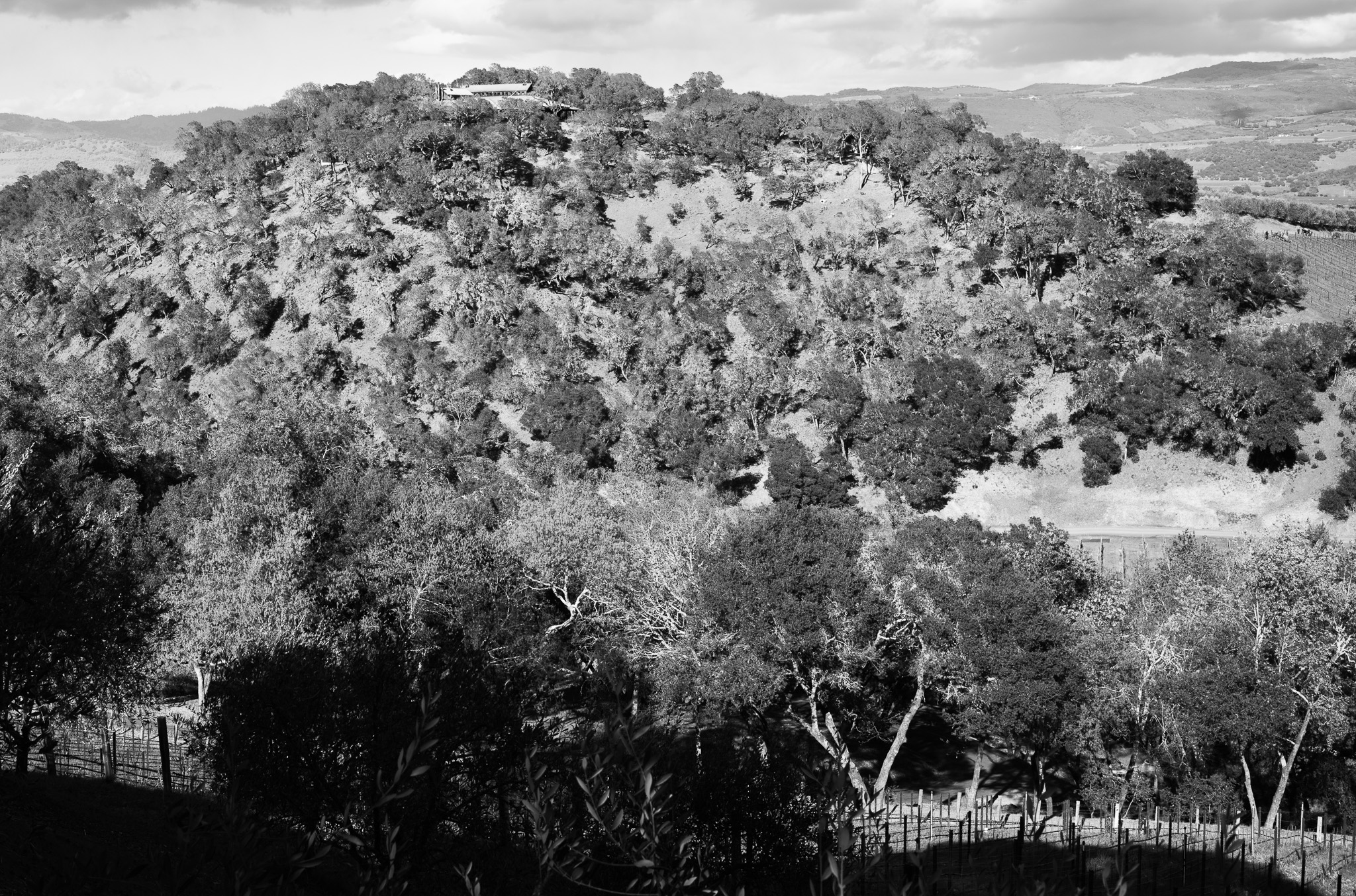
Continuous Evolution
Down in the cellar Bob dips a pipette into a barrel of the base blend 2021 Harlan and we taste –
Deep ruby, clear and limpid; a spicy, cherry-scented, floral, fragrant aroma, pure and expressive; the palate impression is supple, with sweet fruit, a juicy freshness, a slow release of flavour, elegant and fine, this is harmonious and very long, with tension, seamlessness, and with an elastic feel that coats and palate and then pulls back to the palate centre. Great energy and equilibrium, fullness, with real complexity – there is so much pleasure here already from barrel. The concentration, depth of fruit and supple tannin convey confidence in its cellar potential.
Upstairs, over a bottle of 2018 Harlan, our conversation turns to the fires that shaped the 2020 vintage in Napa – a year which saw many estates not bottle any wine under their grand vin labels (or at all), due to smoke taint. The LNU Fire had begun on 17th August, and while the Harlan estate was not affected by smoke as the grapes reached maturity, it was worrying the team.
“With the work we have been doing in tannin maturity, we are seeing that arrive earlier in the growing season, and we have been seeing our picking dates get earlier too. But here we faced the risk of the arrival of smoke taint at some point and we sat down as a team and made the decision: we would pick now, and decide later if we had the quality for Harlan. We had the skin maturity, the flavour maturity, the seeds maturity. We would normally have waited a little longer, but we picked. In fact… we really liked what we found, and it led us to pick earlier in 2021 and 2022 – by choice. We were heading in this direction anyway, but 2020 provided us with a step. At harvest we were willing to not make any 2020 Harlan if we had got it wrong, but we are happy with the result.”
2018 Harlan
A fairly opaque ruby, thick-textured in the glass; a pure ripe aroma, dark chocolate, dark fruit, this has a fragrantly rich aroma, though not gratuitously so; the palate is sumptuous, rich, with dark fruit, it is immaculate in quality, melting in texture, with very fine tannins, the aromatic feel builds toward the long finish. A well-balanced lovely wine, richer than the barrel sample 2021, but also with eminent finesse.
From a low-yield potential for about 4000 cases a year, about 2000~2500 cases of Harlan are made each year, around 1,000 go to the second wine – Maiden, and the rest is sold off in bulk. “What we are trying to make with Harlan is the best wine of each vintage, but it is also a wine of that vintage, and we are trying to find balance within that vintage.”
Though better (?) judgement prevailed as we sipped 2018 Harlan and chatted, it struck me that this wine, at the tender age of three-and-a-half, was an absolute pleasure already, and the bottle would be empty if we weren’t careful. I have learned from experience that while Harlan can age, and reward cellaring (as two 1994 Napa horizontal dinners I hosted reconfirmed), it doesn’t need it in the way that the classic Bordeaux/Cabernet orthodox paradigm dictates. There is pleasure in drinking Harlan young, and I wouldn’t hesitate.
1 https://en.wikipedia.org/wiki/Sprezzatura
2 https://en.wikipedia.org/wiki/The_Secret_Life_of_Walter_Mitty_(2013_film)
